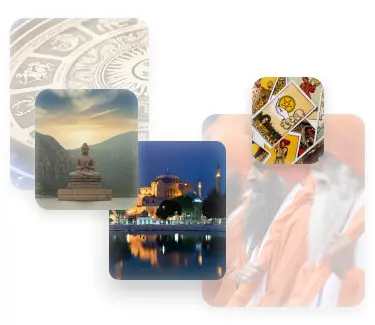The section is open for editing
Vedas
The oldest of fully preserved, sacred texts composed thousands of years ago in ancient India during the times called the Vedic period. The language of the Vedas is Sanskrit. According to Hindu beliefs, the creation of the Vedas is attributed to Brahma. In modern Hinduism, some of the chants of the Vedas still retain ritual significance. Philosophical and religious schools of India are divided into orthodox (astika) — recognizing the authority of the Vedas, and unorthodox (nastika) — those who reject it.
The section is open for editing
A brief history
The first Vedic texts appeared on the territory of modern India approximately in the XVII century BCE. The texts of various sections of the Vedas were formed over a millennium and finally took shape during the activity of the Buddha in the V century BCE. First, the Vedas were transmitted orally in the environment of the Vedic priesthood from teacher to student, and then were already recorded.
In the classification of Hindu sacred texts, the Vedas refer to the texts of revelation – the srute. Each text has a main part, the Samhita, and commentaries on it: Brahmanas, Aranyakas and Upanishads. Vedic literature is divided into four Vedas: Upanishads, Vedanta-sutra, Rigveda and Itihasa.
The term Vedas means “to know”, “crown of knowledge”, “reliable knowledge”. The Vedas presuppose knowledge that has a sacred origin. Initially, the Vedas were considered as hymns, which were sung by the priests in praise of the gods. For many centuries, hymns have not been recorded.
The essence
The Vedas contain the original writings of Hindu teachings containing spiritual knowledge that covers almost all aspects of life. The rules of the Vedas regulate the social, legal, religious, internal customs and traditions of the Hindus from ancient times to the present day.
The essence of Vedic teaching cannot be described in a few words. Let’s just focus on the basic assumption: we are not just bodies. Man is a spiritual being temporarily limited by the flesh. The immaterial essence of a person must separate from the material world and return to God in order to find true happiness and destiny. The most intimate, deep and attainable knowledge of our true nature can be known by those who have gained pure consciousness. Standards of pure consciousness: humility, simplicity, truthfulness, ability to control emotions, nonviolence, tolerance, compassion.
Hinduism asserts that when a person desires material benefits in any of his incarnations, he must perform sacrifices. The four Vedas compensate for material addictions by worshiping demigods.
The Vedas contain 1028 hymns. There are four Vedas:
Rigveda – The Veda of Hymns;
Samaveda – The Veda of Chants;
Yajurveda – The Veda of Sacrificial Formulas;
Artharvaveda – The Veda of spells.
Although Vedic rituals are extraordinarily complex, many scholars view them as crude incantations of ignorant savages. Challenging this opinion, Ainslie Embree writes: “The word Veda means ‘hymns’. Therefore, they are not a spiritual revelation of the heart of a primitive savage at the dawn of human history, as is sometimes believed; this is the achievement of a highly developed religious system.”
As a rule, people are attracted to a section called karma-kanda, which describes the actions that elevate a person to the heavenly planets. It is stated that if a person desires such material benefits, he must perform the sacrifices described in the Vedas. Without understanding the true Vedic Siddhanta, many people think that the karma-kanda section is their ultimate goal.
The four Vedas encourage the gratification of material desires through the worship of demigods. For example, those who want to enjoy sex worship the king of heaven Indra, and those who want to have good offspring should honor the great progenitors, Prajapati. Those who seek good fortune should worship the goddess Durga, and those who crave strength should worship Agni, the god of fire. The one who aspires to wealth should honor Vasu, and the one who wants his body to be strong – the Earth. In any case, the Vedic literature speaks of demigods not as a product of imagination, but as empowered executors of the supreme will, managing the affairs of the universe. Nature does not act by itself, there is a personality behind any of its manifestations. For example, Indra distributes the rainfall, and Varuna is in charge of the sea element.
Biography of the creator/creators
The section is open for editing
Modern Leaders
The section is open for editing
Scandals
The section is open for editing
Territorial coverage
The whole world.
Number of followers
Unknown
Year of creation
XVII-XV centuries BCE.



 RU
RU
